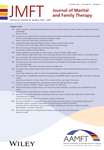Information Hub / Clinician Publications
30 Years of Expertise
Explore publications and research created by A Home Within clinicians over the last three decades. If you are interested in adding a publication to this list, contact Grace Manger at grace@ahomewithin.org.




















